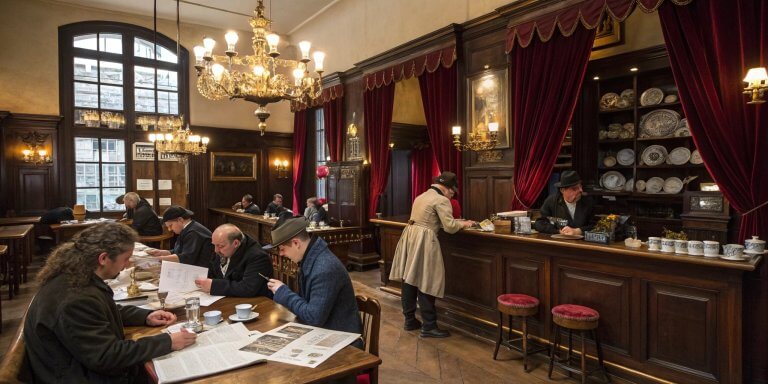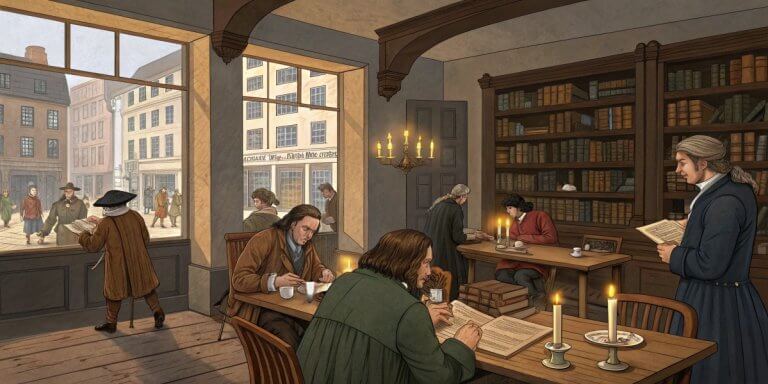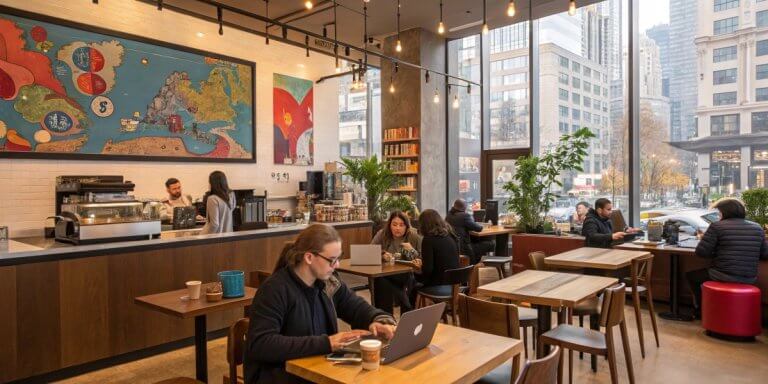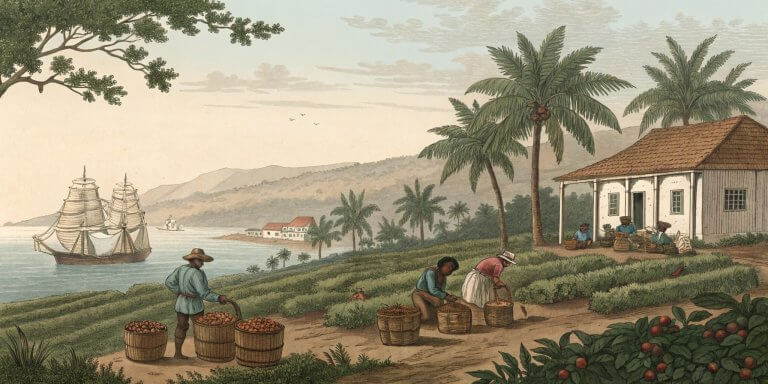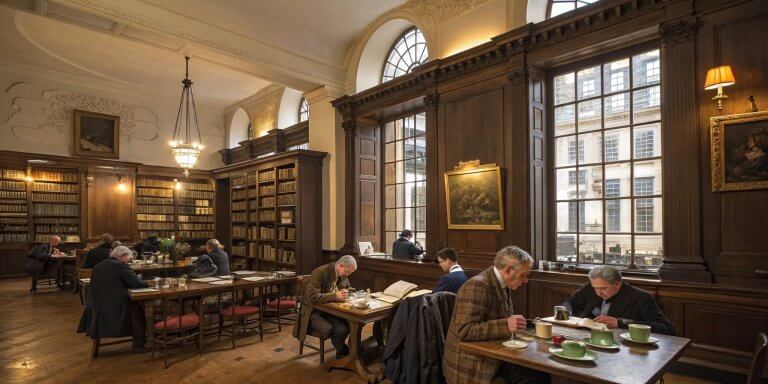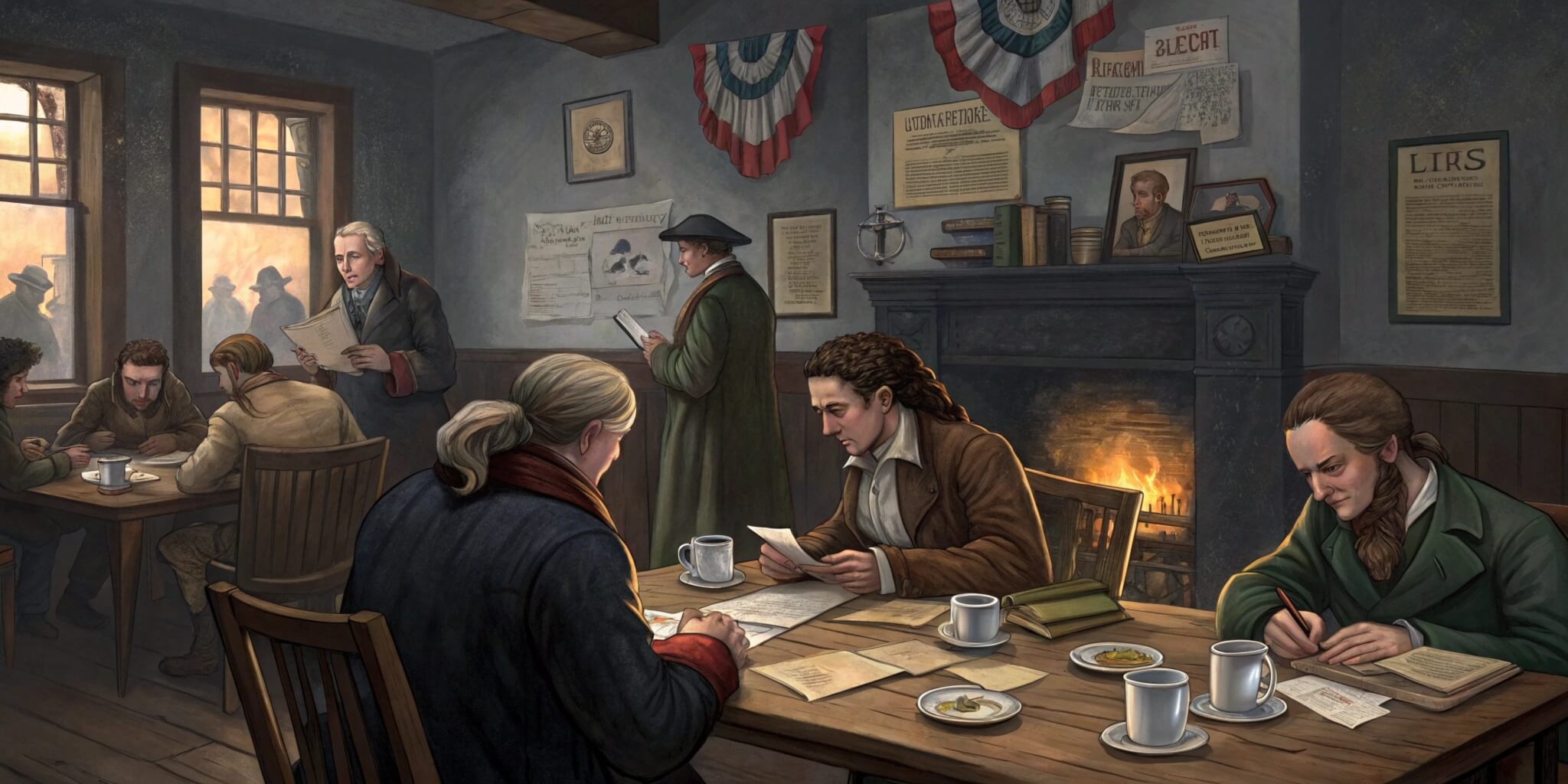
Most of us enjoy coffee to kick-start our day, but only some realize its history is filled with revolutionary ideas. For centuries, coffeehouses were more than places to grab a drink—they were centers for discussion, debate, and, in many cases, the breeding grounds for political change. From the Ottoman Empire to the American and French Revolutions, coffeehouses have been at the heart of movements that changed the world. Let’s dive into the fascinating history of how a simple cup of coffee fueled revolutions and political movements.
The Origins of Coffeehouses
The first coffeehouses opened in the Ottoman Empire in the 16th Century. Unlike taverns, which were places to drink alcohol, coffeehouses offered a more socially inclusive space where men of all classes could gather to drink coffee, smoke, and discuss everything from politics to philosophy. These coffeehouses were known as Yahweh Khaneh and became popular quickly because they provided an accessible meeting place for everyone.
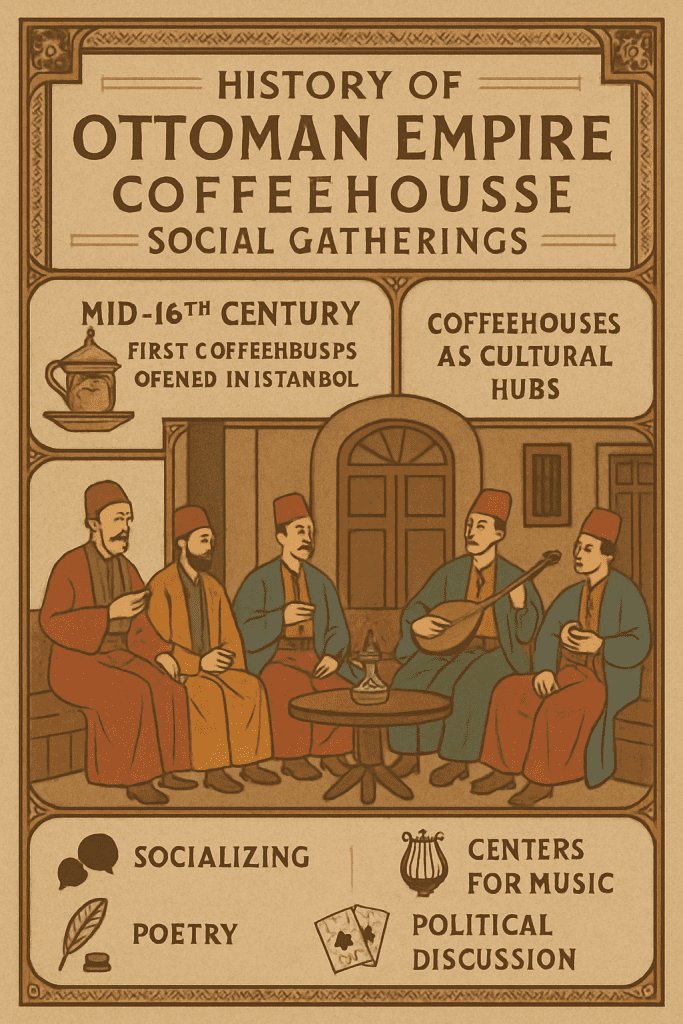
Inclusive social hubs in 16th-century Ottoman Empire.
However, the authorities only sometimes welcomed this new social trend. Sultan Murad IV, ruling in the early 17th Century, became suspicious of coffeehouse gatherings. He feared that these places encouraged dissent and that people were plotting against his rule. In 1633, he banned coffee and ordered the execution of those caught drinking it, believing it could incite rebellion.
English Coffeehouses
Coffeehouses arrived in England by the mid-1600s, and they quickly became known as “penny universities.” The reason for this nickname? Anyone could buy a cup of coffee and participate in intellectual conversations with writers, scholars, and thinkers for just a penny. At a time when beer was often safer to drink than water, coffee offered a new, stimulating alternative.
In London, coffeehouses became centers of information exchange. Newspapers and pamphlets circulated freely, and these spaces were crucial for spreading political ideas. However, like in the Ottoman Empire, the ruling class grew concerned. King Charles II attempted to shut down coffeehouses in 1675, claiming they were “hotbeds of seditious talk.” His fear was understandable—people were openly criticizing the government and discussing alternative forms of leadership in these spaces
But public outcry was so strong that the ban lasted only 11 days.
The Stirring Grounds of the American Revolution
In the American colonies, coffeehouses played an essential role in the lead-up to the American Revolution. By the mid-18th Century, coffee had become a patriotic drink, especially after the Boston Tea Party in 1773, when colonists protested British taxes by dumping tea into Boston Harbor. After that, drinking tea was seen as unpatriotic, and coffee became the drink of choice for those who wanted to express their desire for independence.
Key figures like Benjamin Franklin, John Adams, and Thomas Jefferson frequented coffeehouses, where they met to discuss strategy and plan revolutionary activities. The Green Dragon Tavern in Boston, known as the “Headquarters of the Revolution,” was one of these places. Here, the Sons of Liberty members, including Samuel Adams and Paul Revere, organized some of the most significant events leading up to the American Revolution.
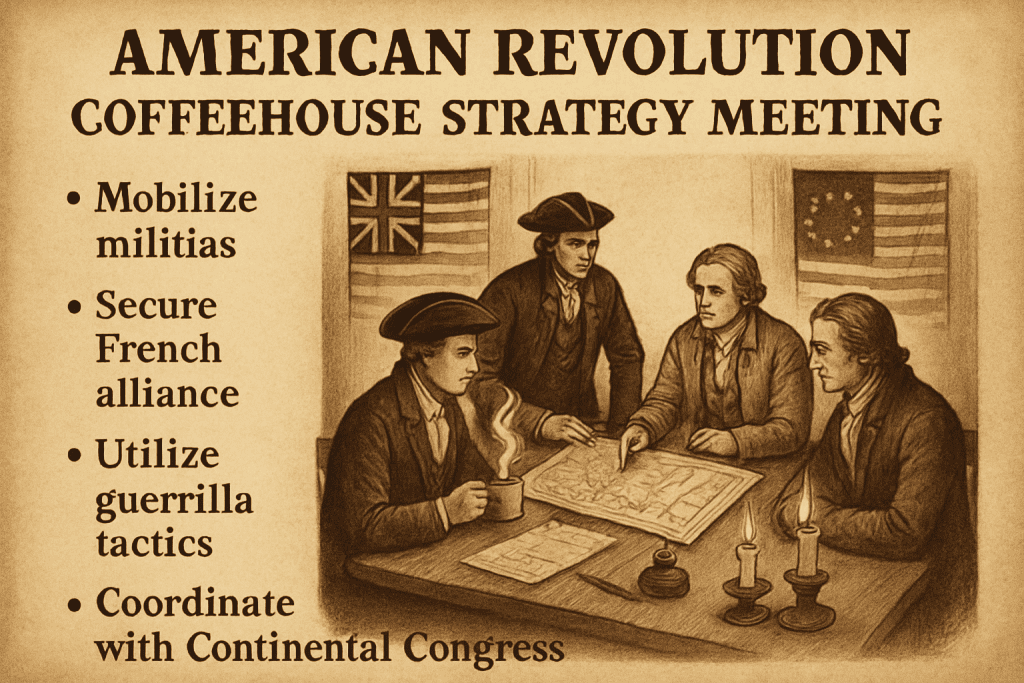
Patriots plotting independence over coffee.
Coffeehouses, with their unique ability to unite people from all social classes, played a crucial role in spreading revolutionary ideas, demonstrating the power of inclusivity in driving social change.
The French Revolution and Parisian Cafés
Parisian cafés during the late 18th Century played a similarly critical role in the French Revolution. Cafés like Café de Foy became meeting places for people dissatisfied with the monarchy. Revolutionary leaders like Maximilien Robespierre and Camille Desmoulins would give speeches in these cafés, rallying people to their cause. At Café de Foy, Desmoulins called for an armed uprising, which led to the storming of the Bastille in 1789, a turning point in the French Revolution.
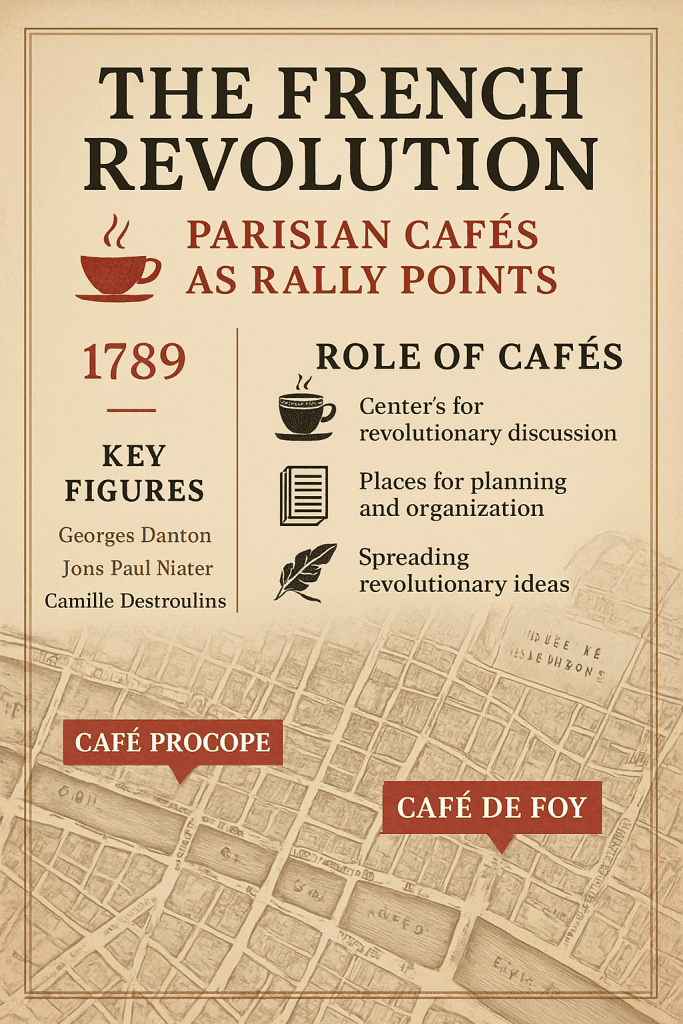
Revolutionary speeches in Parisian cafés.
These cafés were unique because they allowed people from different social classes to mix freely. This was important in a society that had previously been very divided by class. The ability to share ideas across class lines helped build momentum for the revolution, giving ordinary people a place to voice their grievances and join the growing movement for change.
Coffeehouses and the Abolitionist Movement
Coffeehouses were not just places for socializing but also crucial in the fight against slavery in the 19th Century. Abolitionists used these spaces to organize, spread information, and coordinate efforts to end slavery, leaving a lasting impact on human rights movements.
In England, coffeehouses supported the campaign to abolish the slave trade, which succeeded in 1807. Similarly, in the U.S., abolitionists gathered in coffeehouses to discuss strategies for ending slavery and promoting racial equality. The discussions held in these spaces were vital to the eventual success of the abolitionist movement.

Planning emancipation in 19th-century coffeehouses
Coffeehouses in the 20th Century
Coffeehouses continued to be centers of social activism in the 20th Century, particularly during the Civil Rights Movement in the United States. African American activists used coffeehouses to hold meetings, plan protests, and discuss strategies for combating segregation and discrimination. These spaces became safe havens for activists to meet without fear of violence or arrest.
The Civil Rights Movement used coffeehouses not just for planning but also for raising awareness. Musicians, poets, and speakers would perform in these venues, using art and culture to engage people in the fight for racial equality. Coffeehouses during this time were more than just places to meet; they were platforms for raising consciousness and inspiring action.
The Modern Legacy of Coffeehouses in Activism
Today, coffeehouses continue to be places where people come together to discuss important social and political issues. Many coffee brands now support fair trade and ethical practices, using their platforms to advocate for social justice and environmental sustainability.
Modern coffeehouses often host events for community activism, discussions about politics, and fundraisers for social causes, continuing the tradition of being spaces for revolutionary ideas.
Starbucks, for example, has positioned itself as a company that promotes ethical sourcing and supports various social causes. Independent coffeehouses worldwide often serve as venues for open mic nights, political debates, and grassroots organizing. In this way, coffeehouses’ legacy as places for political and social change lives on.
Conclusion
From the Ottoman Empire to modern-day activism, coffeehouses have always been more than just places to drink coffee. They have been centers of conversation, intellectual exchange, and, most importantly, political change. Whether it was the American patriots in Boston or the revolutionaries in Paris, the ideas that shaped the modern world were often born in the humble setting of a coffeehouse. Today, as we enjoy our cups of coffee in cafés worldwide, we are participating in a long tradition of debate, activism, and the exchange of revolutionary ideas.
References:

